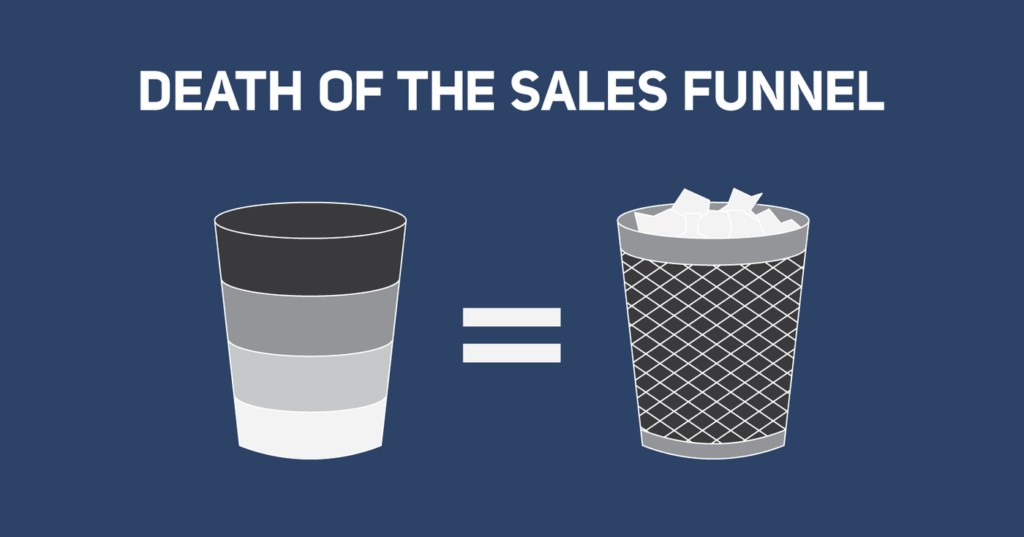Here we are, companies continue to arbitrarily assign geographical territories — with complete disregard for optimizing for degrees of separation or even revenue conversion. No wonder the sales funnel, for many, is broken (or leaky if you prefer).
During the period between 1949 and 2016, we landed on the moon, developed technology to harness power from the sun, and now have the ability to mass produce electric cars.
Why are we not able to partner the right salesperson with the optimal future customer, or more more broadly, surface our next customer?
Enterprise’s little brother: Mid-Market
Book of business (or BOB for short) has been widely adopted by enterprise sales, however originated from the legal profession. Lawyers (like sales reps) value their BOB, and develop it throughout their career. Partners in a firm develop relationships to demonstrate their value to the firm.
With the advent of CRM, sales organizations have translated BOBs to assign sales reps accounts at scale. Teams focussed on selling to the enterprise apply significant care to ensure reps are satisfied with their accounts, and the number of accounts is generally within a finite universe of the Fortune 500 or 1000. Due to the low quantity, sales and marketing organizations are able to deploy significant resources to aid conversion, and the buyer lifecycle is often well-documented.
Unfortunately, not every organization has the luxury of selling to the Enterprise. Along the technology adoption lifecycle, the majority of companies begin their selling endeavor at SMB and Mid-Market.
What does this mean for those selling to Mid-Market or even SMB? The ocean of accounts is wide — really wide. How does one generate relationships with the Top-100,000?
This is where things get messy. Workflow automation supports wider reach, more conversations, more replies, more everything. To support these increases, sales and marketing organizations apply funnel metrics to track every step in the process, from click to close. This is not sales strategy, it’s sales process.
What’s the result? Enormous waste. In recent times, sales and marketing organizations have come to accept a 20% close rate as success and model their progress through a set of activity metrics within a funnel. When is a two out of ten across sports, engineering, or even academia a success?
More importantly, how has this happened and where do we go from here?
The Relationship Era
Since the advent of email, marketers have been searching for methods and technology to fuel the holy grail: 1:1 marketing. In the world of consumer marketing, marketers are now equipped with enormous relational databases that serve rich segmentation data at a scale that was a dream only a few years ago.
The advancements in consumer relationship marketing arrived a little later for B2B marketers, however, B2B marketing technology vendors quickly attempted to hobble together two foreign concepts, accounts-based and relationship marketing, to form Accounts Based Marketing or ABM. The distinguishing difference between business to consumer and business to business is that business to business requires a sales organization to communicate value.
Creating an ABM model in a silo is just that, an accounts-based silo.
On the other side of the organization, sales don’t want to get left behind. In the next wave of sales development, we see sales organizations adopting account-based sales development. Once again, another silo. With the two functions working independently with technology that serves only one side of the coin, we continue to struggle to solve the underlying problem: who is the next customer?
Beyond the search box
Google search revolutionized the discovery process for nearly all of us. This simple (actually very complicated) website has served us for over a decade, and shows no sign of resolve. Entire businesses have been built on the back of Google search, and consumer marketers continue to find new ways to get ahead of the search.
Think for a moment. You’ve just sent out a proposal to a client using a combination of MS Word and MS Excel. This moment is very gratifying, yet also painful. You decide you’ll never create another proposal manually again. You open up your browser to Google, and begin the discovery process to find a solution to the problem. While you’re now in discovery-mode, it’s already too late for all the technology providers out there serving this market. Their success is almost entirely dependent on how well they perform in Google search.
It’s time to think beyond the search box.
The limitation with search is that it requires the user to navigate through all the pages to surface all the information to provide the complete context. Almost all businesses have an online presence in some shape or form. This data could include a formal website, SEC filing, BBB review, or even a Yelp listing.
This trail of digital breadcrumbs provides clues into a business’s potential buying patterns. For example, purchasing a payroll solution indicates more than one employee and a web analytics provider suggests investment in understanding website behavior and even online monetization.
Depending on the investment size with either solution, one can discern organization maturity. For example, using Gusto! (formally ZenPayroll) would suggest the company is within the SMB segment, conversely purchasing Workday would indicate a larger more mature organization.
Armed with this information, sales and marketing organizations have the potential to assign a set of accounts for Enterprise down to SMB based on likelihood to buy.
Alignment to the optimal sales rep requires the next leap in B2B relationship data. The missing gap for turning this into reality: account-based intelligence. Underpinning the future of account-driven businesses is contextual data that powers marketing and sales to drive conversations with the right companies, people, time, and message.
Let’s leave the funnel at the door, and let Willy capture his hometown advantage.







